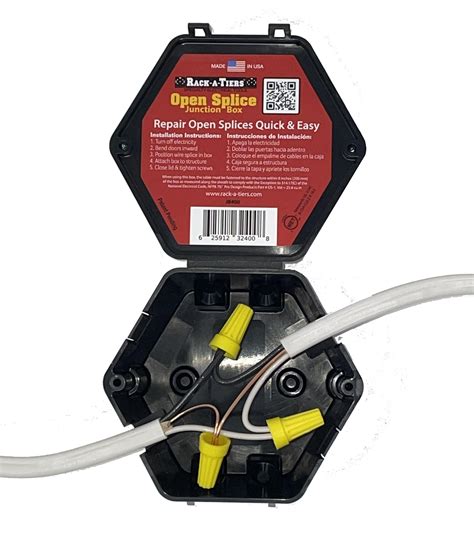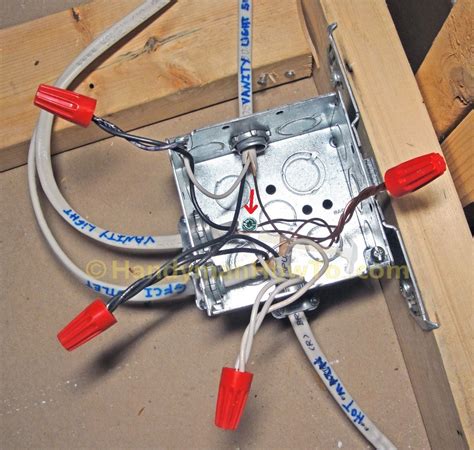can you put a junction box behind tile You are correct, the junction boxes must remain accessible. The NEC 314.29 . Our professional welders produce high quality custom metal work on all projects and are certified SMWIA workers. Carbon Steel 24ga to 1″ plate; Stainless Steel 24ga to 1″ plate; Galvanized Steel 24ga to 1″ plate; Specialty Metals including Copper & .
0 · replacement wire for junction box
1 · electrical outlet for junction box
2 · covering junction boxes
3 · covering junction box without wiring
4 · covering junction box outlet
5 · covering electrical junction box
6 · can you cover a junction box
7 · best way to cover junction box
In most cases, a typical heating element refers to a coil, ribbon- straight or corrugated- or a strip of wire that radiates heat much like a lamp flame. When an electric current flows through it, it glows intensely red hot and converts the electrical energy going through it into heat, which radiates out in all directions.

You cannot cover any junction box that still has live wires in it. Your best bet is to either remove the box all together or just put a cover plate on it.You are correct, the junction boxes must remain accessible. The NEC 314.29 . This necessitates something important: you must cut the tile to allow access to the box. The simple answer is that, if the box is flush with your mounting surface, it might be . Your box would not be considered accessible if you staple your ceiling tile to the joist, unless you left a cover for it on the new ceiling tile. You might be able to flip the junction .
Just fill the old holes with toothpicks and wood glue? The box can be setback no more than 1/4" from a noncombustible surface. Answers based on the National Electrical Code. Local amendments may apply. Check with your .

Read https://electrical.theiet.org/media.tions-and-maintenance-free-junction-boxes.pdf and then decide if you can fit the necessary cable clamping behind that tile. If the cable comes from above, make the joint in the .I have slightly recessed the boxes so handibox covers come out 3mm below surface and then use some 3m velcro tape on cover and tile to make the tile removable.
If you can find an electrician that already has one, they might be able to find it faster than one who does not. But here's the thing; it is illegal to put junction boxes behind walls, you must have . In redoing our kitchen splashback, I've discovered that there is a junction box buried in the plaster. It doesn't have a cover, and had previously been tiled over. I am planning .In offices, junction boxes are usually in the ceiling, above the t-bar. But they are accessible by moving the ceiling tile. Or in a drywall ceiling, an access panel has to be installed. You are correct, the junction boxes must remain accessible. The NEC 314.29 prohibits covering up boxes such that you'd need to remove "part of the building" to access the .
replacement wire for junction box
You cannot cover any junction box that still has live wires in it. Your best bet is to either remove the box all together or just put a cover plate on it. This necessitates something important: you must cut the tile to allow access to the box. The simple answer is that, if the box is flush with your mounting surface, it might be compliant as-is after tiling. Your box would not be considered accessible if you staple your ceiling tile to the joist, unless you left a cover for it on the new ceiling tile. You might be able to flip the junction box and face it into the attic if that's an option.
Just fill the old holes with toothpicks and wood glue? The box can be setback no more than 1/4" from a noncombustible surface. Answers based on the National Electrical Code. Local amendments may apply. Check with your local building officials. The other option is to move the boxes after the tile has been installed. Read https://electrical.theiet.org/media.tions-and-maintenance-free-junction-boxes.pdf and then decide if you can fit the necessary cable clamping behind that tile. If the cable comes from above, make the joint in the loft or floor void and thread a fresh length of cable down to the light fitting. Solder. I have slightly recessed the boxes so handibox covers come out 3mm below surface and then use some 3m velcro tape on cover and tile to make the tile removable. If you can find an electrician that already has one, they might be able to find it faster than one who does not. But here's the thing; it is illegal to put junction boxes behind walls, you must have access to them (for the very reason you are experiencing now).
In redoing our kitchen splashback, I've discovered that there is a junction box buried in the plaster. It doesn't have a cover, and had previously been tiled over. I am planning on re-plastering and tiling this wall, and I'm not sure how to handle the junction box.
In offices, junction boxes are usually in the ceiling, above the t-bar. But they are accessible by moving the ceiling tile. Or in a drywall ceiling, an access panel has to be installed.
You are correct, the junction boxes must remain accessible. The NEC 314.29 prohibits covering up boxes such that you'd need to remove "part of the building" to access the wires inside. The drywall is considered "part of the building."You cannot cover any junction box that still has live wires in it. Your best bet is to either remove the box all together or just put a cover plate on it.
b metal fabrication ca
This necessitates something important: you must cut the tile to allow access to the box. The simple answer is that, if the box is flush with your mounting surface, it might be compliant as-is after tiling. Your box would not be considered accessible if you staple your ceiling tile to the joist, unless you left a cover for it on the new ceiling tile. You might be able to flip the junction box and face it into the attic if that's an option. Just fill the old holes with toothpicks and wood glue? The box can be setback no more than 1/4" from a noncombustible surface. Answers based on the National Electrical Code. Local amendments may apply. Check with your local building officials. The other option is to move the boxes after the tile has been installed.
b5 s4 metal thermostat housing
Read https://electrical.theiet.org/media.tions-and-maintenance-free-junction-boxes.pdf and then decide if you can fit the necessary cable clamping behind that tile. If the cable comes from above, make the joint in the loft or floor void and thread a fresh length of cable down to the light fitting. Solder. I have slightly recessed the boxes so handibox covers come out 3mm below surface and then use some 3m velcro tape on cover and tile to make the tile removable. If you can find an electrician that already has one, they might be able to find it faster than one who does not. But here's the thing; it is illegal to put junction boxes behind walls, you must have access to them (for the very reason you are experiencing now).
In redoing our kitchen splashback, I've discovered that there is a junction box buried in the plaster. It doesn't have a cover, and had previously been tiled over. I am planning on re-plastering and tiling this wall, and I'm not sure how to handle the junction box.In offices, junction boxes are usually in the ceiling, above the t-bar. But they are accessible by moving the ceiling tile. Or in a drywall ceiling, an access panel has to be installed.
electrical outlet for junction box
covering junction boxes
That's usually referred to as an end-swell, which is basically a small piece of metal that's kept on ice which is applied to any area of a fighter's face that is swelling or bruising. By decreasing blood flow to a specific area of a fighter's face, cornermen can help to reduce swelling, particularly around the eyes.
can you put a junction box behind tile|can you cover a junction box